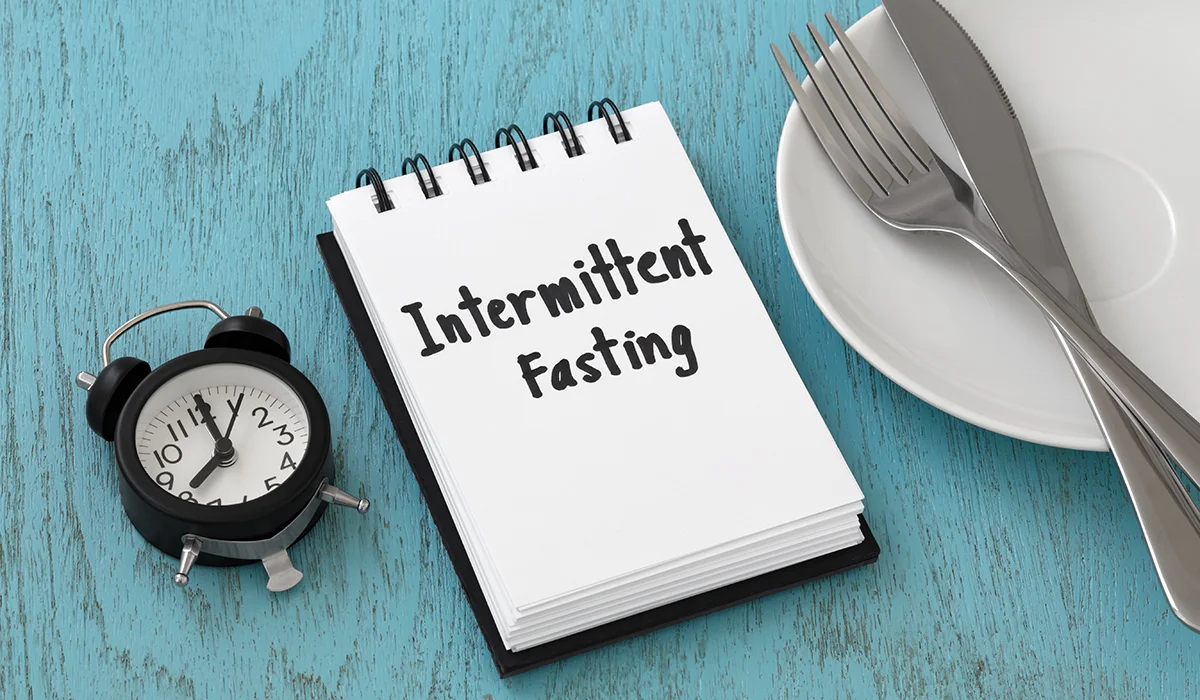Fasting has deep roots in human history. People from all cultures have embraced this practice, and with good reason too. Our ancestors practiced intermittent fasting for centuries, and now science helps us understand why it’s so effective.
The results from intermittent fasting are remarkable. Research at the University of Chicago reveals that participants shed 11.5 pounds in just 12 weeks without losing muscle mass. These impressive outcomes stem from different fasting windows that range from 16/8 to 72+ hours. Each window brings its own advantages – from steadier blood sugar levels to a complete renewal of the immune system.
Let’s take a closer look at the science to understand how intermittent fasting affects your body at each stage. The process starts with a 12-hour metabolic reset and continues through extensive cellular repair during longer fasts. Your success depends on understanding these time windows, whether you want to shed pounds, reduce inflammation, or enhance your metabolic health.
12-Hour Fasting Window: The Metabolic Reset
The 12-hour fasting window makes a great starting point if you’re new to intermittent fasting. This approach, known as the 12:12 method, lets you eat for 12 hours and fast for 12 hours. Most people find it lines up naturally with their sleep schedule, making it one of the most available forms of intermittent fasting.
12-Hour Fasting Window Benefits
Your body undergoes several metabolic changes during a 12-hour fast. The body starts using fat as its main fuel source after about 12 hours without food, once glycogen stores run low [1]. This metabolic switch can boost insulin sensitivity and fat burning.
The 12-hour fast stands out because of its simplicity. You don’t need to count calories or make big changes to your daily routine, unlike stricter fasting methods [1]. It gives you a gentle introduction to fasting that fits most lifestyles.
Studies show health benefits even from this shorter fasting period. Research found that fasting for 12-14 hours can improve health markers, including weight control and blood sugar levels [1]. Spacing meals at least 12 hours apart regularly might help your overall metabolic health [2].
Blood Sugar Regulation During Short Fasts
Blood sugar regulation changes significantly during the 12-hour fasting window. Your body uses up its available glucose supply 10-12 hours after your last meal [2]. This triggers metabolic adaptations that can boost insulin sensitivity and glucose metabolism.
Insulin levels drop while glucagon rises during fasting [3]. These hormone changes help break down stored fat into fatty acids and ketones for energy. “Metabolic switching” helps manage weight and stabilize blood sugar levels [2].
Research shows that intermittent fasting improves insulin sensitivity and lowers fasting blood glucose [3]. This could mean better blood sugar control and possibly less medication if you have type 2 diabetes or risk factors. Note that diabetics should talk to their doctor before starting any fasting program [3].
Ideal Candidates for 12-Hour Fasting
Most healthy adults can safely try the 12-hour fasting window. It works especially well for:
- Beginners: Use this method as a stepping stone to longer fasts [1].
- Busy professionals: The simple approach fits hectic schedules.
- Night owls: Set a cutoff time for evening meals.
- People with stable blood sugar: Try this fasting window if you don’t have diabetes or blood sugar issues [1].
Some groups should avoid fasting:
- Pregnant or breastfeeding women
- Children and adolescents
- People with eating disorder history
- Those with certain medical conditions like diabetes or heart disease
- People taking medications that need food [1][4]
Talk to your doctor before starting any new diet plan, especially if you have health concerns.
How to Successfully Complete a 12-Hour Fast
You can make 12-hour fasting work with the right approach. Here’s what helps:
- Pick your fasting window carefully: Many people fast overnight, like 8 PM to 8 AM [1]. Sleep takes up much of your fasting time.
- Drink enough water during fasting. This helps control hunger and keeps you hydrated [4]. Black coffee and herbal teas (without sugar or cream) work too.
- Plan your meals: Make sure your pre-fast and post-fast meals give you good nutrition. This prevents overeating and keeps your diet balanced [4].
- Start slow and build up: Try longer fasting periods like 14 or 16 hours if 12 hours feels easy [2].
- Watch how you feel: Stop fasting and see your doctor if you get dizzy, weak, or feel bad [4].
- Keep a routine: Your body adapts better with regular fasting times, even on weekends [1].
- Choose nutrient-rich foods: Eat whole, healthy foods during your eating window [4].
- Don’t overdo it: Avoid eating too much when you break your fast [4].
- Exercise smart: Light or moderate exercise usually works fine while fasting, but listen to your body [4].
- Keep track: Write down how you feel, your energy levels, and hunger patterns.
These guidelines help you get the most from your 12-hour fasting window while avoiding common pitfalls. The key to success lies in finding an approach that fits your lifestyle and health goals.
The 12-hour fast can work as a long-term strategy to reset your metabolism and improve health. You might want to try other fasting methods later, but the 12-hour window remains a solid choice for many people looking to boost their health through diet changes.
16-Hour Fasting Window: Enhanced Fat Burning
The 16-hour fasting window takes intermittent fasting up a notch from the 12-hour fast. This extended fasting period, known as the 16/8 method, has become popular because it helps burn fat and offers metabolic benefits. Let’s take a closer look at this fasting protocol and how it can power up your health trip.
16/8 Intermittent Fasting Protocol
The 16/8 intermittent fasting method limits your daily food intake to an 8-hour window while you fast for 16 hours [5]. This method stands out as one of the most popular and eco-friendly forms of intermittent fasting that works well with most people’s sleep schedules and daily routines [6].
You can set your 8-hour eating window between 10 a.m. and 6 p.m., or noon to 8 p.m., based on your priorities and lifestyle [7]. The fasting period means no calorie-containing foods and drinks, but water, plain coffee, and tea are fine [7].
The 16/8 method’s flexibility makes it stand out. Unlike strict diets, you can adjust your eating window to match your schedule [7]. This makes it easier to stick with the plan long-term.
Studies show promising results. People who followed this fasting plan for three months lost almost 3% of their body weight and had lower blood pressure without feeling hungry [8]. A 2020 review of 27 studies with different types of intermittent fasting, including the 16/8 plan, showed weight loss between 0.8% to 13.0% of the original body weight with no serious side effects [8].
Ketone Production and Fat Metabolism
Your body goes through major metabolic changes during the 16-hour fast that help burn fat and produce ketones. After fasting for 12 hours, your body uses up its glucose and changes to fat as its main fuel source [1].
This change triggers ketone production – chemicals your liver makes for energy [2]. Ketosis starts when blood ketone levels hit around 0.5mM [1]. A 16-hour fast can push ketone levels higher, possibly reaching 1-2mM after 48 hours [1].
This switch to ketones and increased fat burning leads to several benefits:
- Better fat burning: Your body taps into stored fat for energy once glucose runs out [6].
- Better insulin response: Fasting can lower insulin levels, making it easier to use stored body fat [6].
- More human growth hormone (HGH): Studies show fasting can boost HGH levels up to five times in men [9]. HGH helps burn fat, preserve muscle, and maintain metabolic health.
- Muscle protection: Higher HGH during fasting might help keep muscle mass while losing weight [9].
Note that while the 16/8 method works for weight loss and metabolic health, total calories still matter. Research suggests people stick to intermittent fasting more easily than traditional diets, rather than it having any special metabolic edge [10].
Mental Clarity Benefits
Many people report sharper thinking and better focus during longer fasts. This happens for several reasons:
- Less toxins: Your blood and lymphatic system carry fewer toxic materials during fasting, which might help you think clearly [2].
- Energy shift: Your body can use energy normally spent on digestion for other functions, including brain power [2].
- Ketone use: Your brain can use ketones as fuel. Research hints that ketones might work better than glucose for brain energy [3].
- More BDNF: Fasting boosts brain-derived neurotrophic factor (BDNF), a protein that helps grow new neurons and supports brain plasticity [3].
- Better daily rhythm: The 16/8 fasting protocol helps match your eating patterns with your body’s natural clock, which can lead to better sleep and alertness [5].
While many people talk about these mental benefits, scientific proof in humans remains limited. Current research shows no clear short-term cognitive boost from intermittent fasting in healthy people [3]. All the same, many find the 16-hour fast helps them stay focused and mentally sharp.
Tips to get the most from 16/8 intermittent fasting:
- Pick your best eating window: Match your 8-hour eating time with your schedule and energy needs.
- Drink enough water: Keep hydrated while fasting to manage hunger.
- Break your fast right: Start with a balanced meal that has protein, healthy fats, and complex carbs.
- Eat nutrient-rich foods: Use your 8-hour window for whole, healthy foods that support your goals.
- Watch how you feel: Notice your body’s signals during fasting and adjust if needed. Talk to a doctor if you have ongoing issues.
The 16/8 intermittent fasting protocol might help you burn fat, improve health, and sharpen your mind. Like any diet change, give your body time to adapt to this new eating pattern.
24-Hour Fasting Window: Cellular Repair
You can unlock powerful cellular repair mechanisms in your body after you become skilled at shorter fasting windows. Your body triggers metabolic changes that boost healing and rejuvenation at the cellular level during this extended fasting period.
Autophagy Activation Timeline
Your body’s natural cellular cleaning process, autophagy, speeds up by a lot around the 24-hour mark of fasting. This vital mechanism breaks down and recycles damaged cell components to remove harmful proteins and infectious bacteria [6]. Autophagy becomes noticeable between 24 to 48 hours of fasting [11]. Your cells create specialized membrane sacs that work like cellular trash bags to collect and contain waste materials [11].
Autophagy intensifies as your fast moves forward. This process helps eliminate old and dysfunctional cells and replaces them with newer, better-functioning ones [12]. Your body maintains homeostasis and optimizes cellular processes through efficient autophagy [12].
Growth Hormone Production
The 24-hour fasting window creates a dramatic effect on human growth hormone (HGH) production. HGH levels can increase by a factor of 20 in men and 13 in women during this period [13]. This surge in HGH leads to:
- Better memory function
- More muscle mass preservation
- Less water retention
- Lower levels of stress hormone cortisol [13]
Insulin Sensitivity Improvements
Your body adapts to a 24-hour fast with notable changes in insulin regulation. Fasting improves insulin sensitivity and reduces insulin swings [12]. Research shows these changes after 24 hours of fasting:
- Blood sugar levels drop by a lot
- Insulin levels decrease
- Your body starts using fat stores for energy [14]
This metabolic adaptation helps reverse blood sugar imbalances and insulin resistance. People with type 2 diabetes might benefit from these changes [14].
Breaking a 24-Hour Fast Safely
Breaking a 24-hour fast properly is vital to maintain its benefits. Start with small portions of easily digestible foods [15]. Here are some guidelines:
Begin with bone broth or well-cooked vegetables to help your digestive system process food again [15]. Next, add nutrient-dense foods slowly that contain enough protein and healthy fats [16].
Stay away from foods high in fat, sugar, or fiber when breaking your fast as they might cause digestive issues [16]. Breaking your fast during daylight hours works better with your circadian rhythm [15].
Common Challenges and Solutions
You might face several challenges during a 24-hour fast. These solutions can help you complete your fast successfully:
Hunger management becomes the biggest problem as leptin levels drop during fasting periods [15]. Proper hydration and light activities can help. Your appetite regulation often improves by a lot after completing a 24-hour fast, though hunger might increase at first [4].
You might experience temporary dizziness or weakness. Here’s what you should do:
- Watch your body’s responses carefully
- Keep up with water and electrolytes
- Skip intensive exercise during the fast
- Stop fasting right away if you feel severe discomfort [17]
Most people lose between two to three pounds during a 24-hour fast [14]. All the same, sustainable weight loss happens gradually over time [4].
36-48 Hour Fasting Window: Deep Ketosis
Your body enters a profound state of ketosis between 36 and 48 hours of fasting. This triggers remarkable metabolic changes and cellular regeneration. The extended fasting window takes the benefits of shorter fasts even further and pushes your body into deeper therapeutic territory.
Maximum Ketone Production
Ketone levels rise substantially during this fasting window as your body switches to fat-based metabolism. Research shows ketone levels typically reach 1-2 millimoles per liter (mmol/L) at this stage [18]. Your body depletes its glycogen stores, which leads to faster breakdown of fat tissue [19].
This peak ketone production creates several body changes:
- Your body burns fat more efficiently for energy
- Growth signaling pathways slow down
- Your cells become more resistant to toxins and stress [20]
Research shows you can boost ketone production even more by exercising at the start of a 36-hour fast. Studies demonstrate that combining exercise with fasting leads to much higher ketone levels – an 8.30 mmol/L difference compared to just fasting [21].
Stem Cell Activation
Your body shows remarkable stem cell changes after 36 hours of fasting. Studies reveal that longer fasts trigger stem cells to regenerate immune system cells [22]. White blood cells break down first, which then stimulates your body to produce new immune cells.
This metabolic change affects several cellular pathways:
- IGF-1 levels drop, which links to aging and tumor growth
- PKA gene turns off, letting stem cells start regenerating
- Stem cells multiply faster and rebuild systems [22]
Research has found that this stem cell activation can make old blood stem cells work almost as well as young ones at rebuilding the blood system [19].
Safety Considerations for Extended Fasting
Extended fasting from 36-48 hours needs careful planning, though it has potential benefits. You should get medical supervision when fasting beyond 24 hours [23].
These groups should not try extended fasting:
- People with type 1 diabetes
- Those with low blood pressure
- Anyone underweight or with eating disorders
- Pregnant or nursing women
- People taking insulin or blood thinners [24]
Staying hydrated is vital for a safe extended fast. Experts suggest drinking water with electrolytes to avoid dehydration and keep mineral balance [24]. The way you break your fast matters just as much – start with light snacks before regular meals to prevent stomach issues [24].
You should limit 36-48 hour fasts to once or twice monthly to stay safe and effective [24]. This gives your body enough recovery time between fasts and ensures you get the best benefits without overstraining your system.
72-100 Hour Fasting Window: Immune System Reset
Extended fasting windows of 72-100 hours create a remarkable turning point in cellular regeneration and immune system restoration. These intensive fasting periods trigger bodily changes that exceed the benefits you get from shorter fasting protocols.
Complete Immune System Regeneration
Studies show that fasting beyond 72 hours resets your immune system completely [22]. Your body breaks down much of its white blood cells during this time and ended up triggering stem cell-based regeneration of new immune system cells [22].
The process works through multiple mechanisms:
- Depletion of older immune cells
- Activation of hematopoietic stem cells
- Production of new white blood cells
- Better resistance to toxins and stress [22]
Research reveals that people’s lymphocyte counts return to normal after 72 hours of fasting. They managed to keep proper balance in their white blood cells [20]. This restoration helps especially when you have chemotherapy since it protects against immunosuppressive toxicity [20].
Maximum Autophagy Benefits
Autophagy reaches peak effectiveness between 72-100 hours [6]. This cellular cleaning process becomes better at:
- Breaking down damaged cell components
- Recycling old cellular material
- Removing harmful proteins
- Eliminating pathogens within cells [6]
Research indicates substantial changes in autophagy markers during prolonged fasting [25]. This heightened state of cellular cleanup helps cells perform optimally and is a vital part of preventing various diseases [6].
Medical Supervision Requirements
Extended fasting’s intensity makes proper medical oversight essential. Healthcare supervision should focus on:
- Monitoring vital signs consistently
- Checking electrolyte levels regularly
- Assessing ketone production
- Evaluating blood pressure changes [26]
Some people should avoid extended fasting completely:
- People with type 1 diabetes
- Those with compromised immune systems
- Individuals taking specific medications
- Anyone with a history of eating disorders [27]
Breaking Extended Fasts
Breaking a 72-100 hour fast needs careful attention and precise timing. Research suggests you should break your fast during daylight hours to better match your circadian rhythms [1].
The best results come from this refeeding sequence:
First Hour:
- Start with warm bone broth
- Add apple cider vinegar and lemon water to help digestion [1]
Subsequent Hours:
- Start with small portions of easily digestible foods
- Choose nutrient-dense options
- Slowly increase portion sizes [1]
Research shows that most people find the challenging part of their fast ends after the 72-hour mark [26]. All the same, proper hydration and electrolyte balance are the foundations of the whole fasting period [26].
Your post-fast nutrition should focus on thyroid-supportive foods rich in zinc, iodine, and selenium [1]. This helps your body maintain proper hormonal balance as you transition back to regular eating patterns.
Comparison Table
| Fasting Window | Main Benefits | The Core Metabolic Changes | Safety Considerations | Breaking Fast Recommendations |
| 12-Hour | Metabolic reset, better insulin sensitivity | Glycogen depletion starts, body turns to fat burning | Safe for healthy adults; perfect for beginners | Simple approach works best – focus on nutrient-rich meals |
| 16-Hour | Improved fat burning, mental clarity | Ketone production rises (0.5-2mM), higher HGH levels | Safe for most people; works best with natural sleep cycles | Begin with balanced meals that combine protein, healthy fats, complex carbs |
| 24-Hour | Cell repair, autophagy activation | HGH levels surge (20x in men, 13x in women), lower insulin levels | Watch for dizziness and weakness; skip intense workouts | Start with bone broth or soft vegetables; stay away from fatty/sugary foods |
| 36-48 Hour | Deep ketosis, stem cell activation | Ketone levels reach 1-2 mmol/L, better fat oxidation | Doctor supervision needed; unsuitable for diabetics, pregnant women | Ease back with light snacks before regular meals |
| 72-100 Hour | Full immune system reset, peak autophagy | Complete immune cell renewal, strongest autophagy effects | Strict medical oversight required; vital signs and electrolytes need monitoring | Begin with warm bone broth, then easy-to-digest foods; focus on thyroid-supporting nutrients |
Conclusion
Research shows how different fasting windows create unique metabolic benefits. We should not treat intermittent fasting as a one-size-fits-all solution. It’s better to see it as a range of options that align with specific health goals.
Fasting periods of 12-16 hours help reset metabolism and boost fat burning. These shorter windows work great for beginners. The 24-48 hour fasts trigger deeper cellular repair through autophagy and boost ketone production. Extended fasts of 72-100 hours regenerate the immune system completely. These longer fasts need careful medical oversight.
Success depends on matching your fasting window to your goals and experience. New practitioners should begin with 12-hour fasts. They can extend their fasting periods as their bodies adapt. People seeking specific health benefits might explore longer windows with proper medical guidance.
Safety should be your top priority during any fast. Your body’s signals matter – pay attention to them. Stay hydrated and break your fast with nutrient-dense foods carefully. Consistent practice brings lasting results, not extreme measures.
Intermittent fasting serves as a powerful health optimization tool when you approach it systematically. Understanding these time-based benefits helps you choose the right fasting protocol for your health goals.
References
[1] – https://www.nutrisense.io/blog/break-a-fast-without-messing-up-glucose?srsltid=AfmBOorG1jZSVzUqVQWuoi5BH2KyeZDiKrU9IITEiknCc4KdJsibUZf4
[2] – https://www.webmd.com/diet/psychological-benefits-of-fasting
[3] – https://pmc.ncbi.nlm.nih.gov/articles/PMC8470960/
[4] – https://www.insidetracker.com/a/articles/ancestral-hunger-top-hacks-for-24-hour-fasting
[5] – https://pmc.ncbi.nlm.nih.gov/articles/PMC8839325/
[6] – https://my.clevelandclinic.org/health/articles/24058-autophagy
[7] – https://www.healthline.com/nutrition/16-8-intermittent-fasting
[8] – https://www.today.com/health/how-lose-weight-intermittent-fasting-16-8-diet-t132608
[9] – https://www.healthline.com/nutrition/intermittent-fasting-metabolism
[10] – https://www.health.harvard.edu/staying-healthy/can-intermittent-fasting-help-with-weight-loss
[11] – https://www.pasteur.fr/en/research-journal/news/intermittent-fasting-cellular-cleansing-improve-health
[12] – https://flore.com/blogs/learn/intermittent-fasting-for-cell-repair?srsltid=AfmBOooS_9yE29UKgsRjwhd54fFF8taStdUAJxeUOeY4SpNdKm9o4qhZ
[13] – https://www.doctorkiltz.com/fasting-benefits-by-hour/
[14] – https://www.drberg.com/blog/24-hour-fasting-benefits
[15] – https://www.nutrisense.io/blog/break-a-fast-without-messing-up-glucose?srsltid=AfmBOorK67F8E66vQY8UHN5aYHYZ6cF8AQIPirhHV_-zvvXjvU1q5hVu
[16] – https://www.healthline.com/nutrition/what-breaks-a-fast
[17] – https://www.healthline.com/nutrition/how-to-fast
[18] – https://www.carbmanager.com/article/yrdolbiaacmapeqp/what-should-your-ketone-levels-be
[19] – https://www.cuimc.columbia.edu/news/fasting-refeeding-paradigm-rejuvenates-old-stem-cells
[20] – https://pmc.ncbi.nlm.nih.gov/articles/PMC4102383/
[21] – https://scholarsarchive.byu.edu/cgi/viewcontent.cgi?article=9602&context=etd
[22] – https://stemcell.keck.usc.edu/fasting-triggers-stem-cell-regeneration-of-damaged-old-immune-system/
[23] – https://www.hopkinsmedicine.org/health/wellness-and-prevention/intermittent-fasting-what-is-it-and-how-does-it-work
[24] – https://www.healthline.com/nutrition/48-hour-fasting
[25] – https://onlinelibrary.wiley.com/doi/full/10.1111/imm.13829
[26] – https://headsuphealth.com/blog/features/therapeutic-fasting-how-to-properly-track-for-best-results/
[27] – https://www.healthline.com/nutrition/water-fasting





